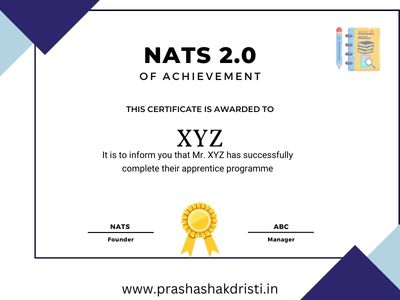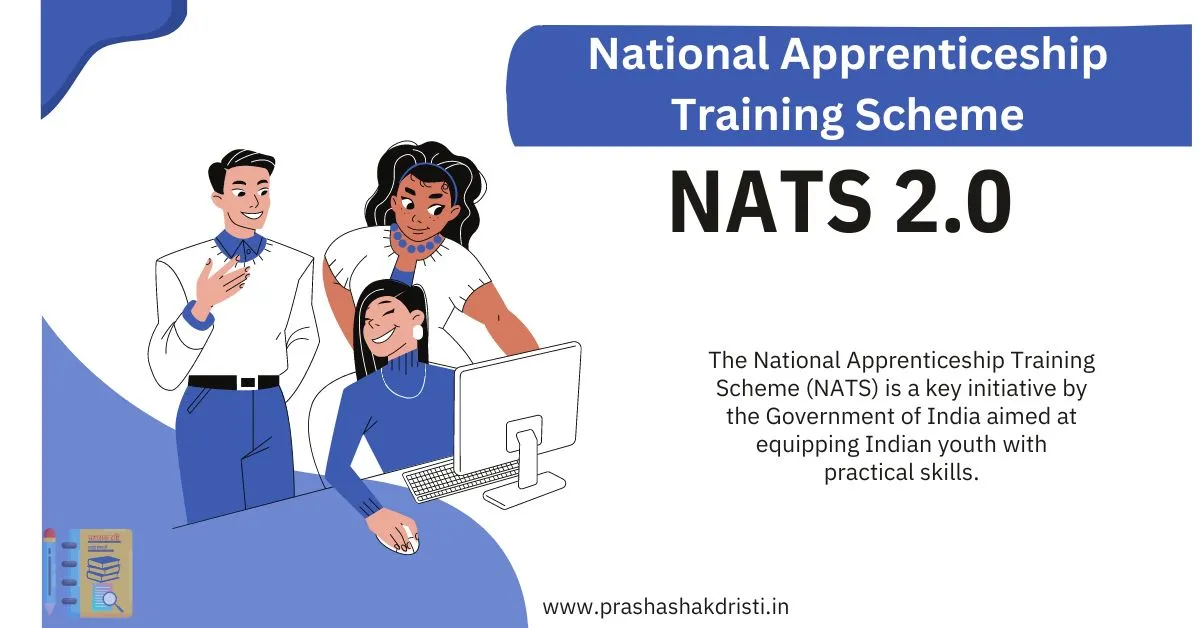The National Apprenticeship Training Scheme (NATS) is a key initiative by the Government of India aimed at equipping Indian youth with practical skills.
National Apprenticeship Training Scheme|NATS
National Apprenticeship Training Scheme, governed by the Apprentices Act of 1961 and amended in 1973, provides hands-on training opportunities to graduates, diploma holders, and vocational certificate holders. The training duration ranges from six months to one year.

History and Importance
Apprenticeship has been a long-standing tradition for learning trades and crafts under experienced mentors. It offers the dual benefit of earning while learning. Apprentices gain practical knowledge in their chosen fields from some of the most prestigious organizations in India. This phase helps students transition from a classroom environment to a real-world work setting.
During the apprenticeship, individuals learn not only technical skills but also soft skills, workplace culture, ethics, and organizational behavior. These skills are crucial for securing permanent employment in the future. The NATS scheme, originating in the 1960s, plays a vital role in India’s industrialization. It aims to bridge the gap between academic curriculum and industry skill requirements, promoting equitable employment opportunities.
Coverage and Disciplines
NATS covers students pursuing various categories such as Graduate, Graduate Sandwich, Technician, Technician Sandwich, and Technician Vocational. The scheme primarily focuses on technical and engineering disciplines but is also expanding to include commerce, arts, humanities, and management domains. This wide coverage ensures that a large number of students benefit from practical training, enhancing their employability.
Training Structure and Stipend
Organizations registered on the NATS 2.0 Portal provide dedicated training managers, comprehensive training modules, and excellent training facilities. Apprentices receive on-the-job training, allowing them to upgrade their professional skills. During the apprenticeship period, apprentices receive a stipend, with 50% reimbursed by the Government of India. The stipend rates are aligned with the minimum rates prescribed under the Act for each category of apprentice.
Certification and Employment Prospects
Upon completing the training period, apprentices receive a Certificate of Proficiency from the Government of India. This certificate is recognized as valid employment experience and can be registered at all employment exchanges across India. Although there is no guaranteed employment after the training, the certification significantly enhances the apprentice’s job prospects.

Role of Board of Apprenticeship Training (BOAT)
The Board of Apprenticeship Training (BOAT) plays a crucial role in implementing the NATS scheme. Regional offices of BOAT conduct and organize Apprenticeship Fairs periodically. These fairs provide a valuable platform for students and organizations to meet and fulfill their training and manpower needs.
Benefits of Apprenticeship Training
Practical Experience: Apprentices gain hands-on experience in their field of study, which is invaluable in today’s competitive job market.
Soft Skills Development: Apprentices learn essential soft skills, such as communication, teamwork, and problem-solving, which are vital for career success.
Professional Growth: Training under experienced mentors helps apprentices understand workplace culture, ethics, and behavior, preparing them for future employment.
Financial Support: The stipend provides financial support to apprentices, allowing them to earn while they learn.
Employment Opportunities: The Certificate of Proficiency enhances employment prospects, serving as proof of practical experience and training.
Why Choose Apprenticeship Training?
Apprenticeship training is a time-tested method of learning a trade or craft under the guidance of a master craftsman. The NATS scheme enables young, technically qualified individuals to receive training that equips them for modern job scenarios. It creates a bridge between academic learning and practical application, making students job-ready.
Apprenticeship is an agreement between a person who wants to learn a skill and an employer who needs a skilled worker. The apprentices are taught the latest applications, processes, and methodologies in their respective fields by renowned organizations in India. This training phase acts as a crucial transition from classroom learning to a working environment.
Apprentices also learn soft skills, work culture, ethics, and organizational behavior during their training. These skills are essential for securing permanent employment in the future. At the end of the training period, apprentices receive a certificate attesting to their training and proficiency in a particular field, which serves as an experience certificate when seeking employment.
Conclusion
The National Apprenticeship Training Scheme is a flagship program by the Government of India to skill Indian youth in various trade disciplines. It offers practical, hands-on training opportunities, bridging the gap between academic learning and industry requirements. With its comprehensive approach, NATS ensures that technically qualified youth are well-prepared for the job market, promoting equitable employment opportunities across the country.
You can also read about – UNESCO Designates 11 New Biosphere Reserves

